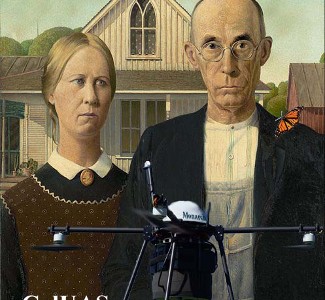Tetracam and CalUAS team up to produce agricultural drones
This could not come at a better time, especially in California where type of technology can help them get through a historical drought. Combining the Monarch drone with a state-of-the-art aerial farm mapping robot and the specialized camera from Tetracam, will provide farmers, foresters and other managers of environmental assets with essential real time information that was once only available from manned aircraft or satellites.
California Unmanned Aircraft Systems (CalUAS), a Ridgecrest, CA based leading unmanned aerospace firm, is teaming with Tetracam, maker of advanced multi-spectral imaging systems, to produce drones optimized to detect crop threats, improve crop management and maximize crop yield.
Located near some of California’s vast agricultural producers, CalUAS provides a perfect complement to Tetracam’s products. “CalUAS is devoted to producing unmanned aircraft systems to meet the requirements of the precision agriculture community,” said Eileen Shibley, executive director of CalUAS. “We are pleased to be partnered with the company that invented and commercialized the first affordable multi-spectral digital cameras for agricultural sensing.”
Tetracam, a Chatsworth California company, was founded in 2000. Since that time the company has maintained leadership in the production of multi-spectral cameras for a variety of scientific uses. “Tetracam is dedicated to staying at the forefront of digital imaging and making the perfect sensors for our aircraft” says Jeff Parisse, robotics designer at CalUAS.
More information about CalUAS and Tetracam is available at: www.caluas.com and www.tetracam.com.
here is a nice video from CalUAS website showing the first trip to the Trona Pinnacles (near Ridgecrest, CA)
Tetracam produces efficient and economical multi-spectral cameras and the software required to interpret what they see. On farms and ranches throughout the world, Tetracam Systems monitor subtle changes in the visible and near infrared radiation that plants reflect. Growers use this data to spot plants under stress, monitor plant growth or to perform dozens of other functions helpful in managing crops. Variations in the near-infrared indicate changes to vegetation long before any indications appear in the visible color spectrum.
Here are examples of an images taken from one of their cameras:
























I’d like to link this article to LinkedIn … Can you send me a URL or provide a button link to share on LinkedIn? Thanks.
Jeff